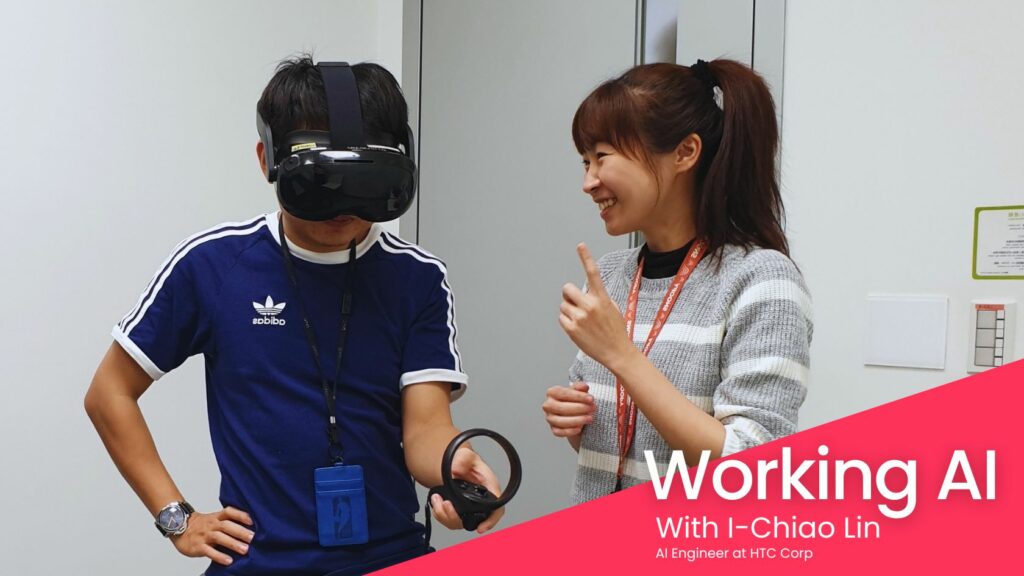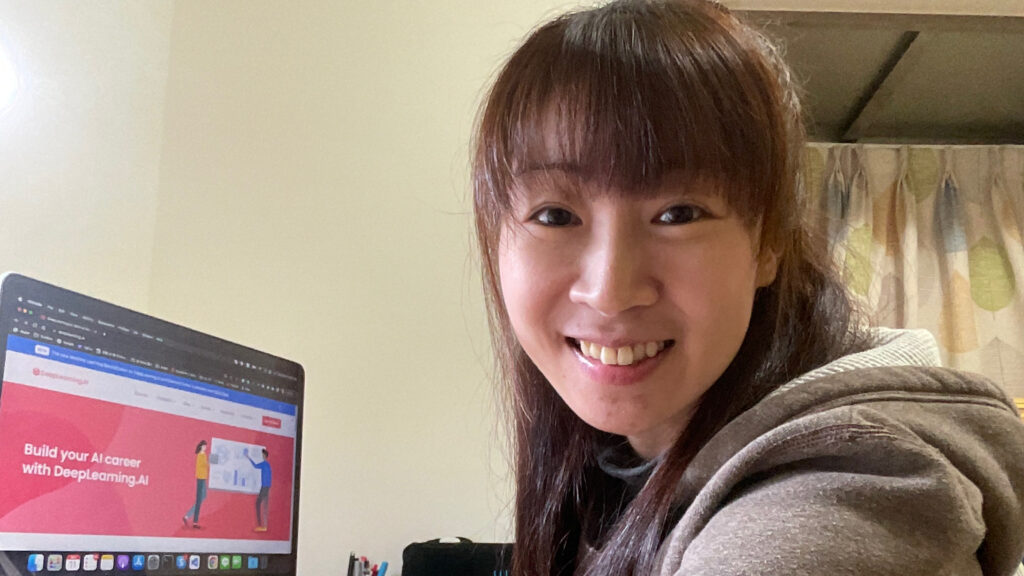Working AI: How I-Chiao Lin Went From App Developer to AI Engineer

I-Chiao Lin is a computer vision specialist who builds AI applications for virtual reality headsets. Previously, she developed computer vision systems for baby monitors that detect a child’s sleep quality. She spoke to us about how she prepares for job interviews, the lessons she has learned developing consumer products, and how a Pixar movie inspired her to pursue a career in AI.
Name: I-Chiao Lin
Title: AI Engineer at HTC Corp
Location: Taipei, Taiwan
Education: Master’s of Information Management, National Cheng Kung University
Favorite Machine Learning discipline: Computer vision
Tell me about your current job. What are your main responsibilities and what is your day-to-day work like?
My main responsibility at HTC is developing machine learning features for our virtual reality devices, such as eye tracking. My day-to-day work consists of researching the latest AI technologies and algorithms required to develop new functions and testing those functions on hardware. My team and I work collaboratively, brainstorming to come up with ideas and test them. In the early proposal stage, we put forward plans for target customer groups and adjust our model by considering product specifications.
What is your favorite part of your job?
Being involved in consumer product development is fun, exciting, and challenging. After the product is finally on the market, I love seeing relatives and friends buying it. I also enjoy reminiscing with colleagues about the difficulties and challenges we experienced during development. This gives me a sense of accomplishment.
What do machine learning engineers need to know about working on consumer products?
Each project is an unforgettable experience, with various twists and turns, unique difficulties and failures. Success depends on factors like market segmentation, customer experience, and specific characteristics of the product.
How did you get your first AI job?
I applied for the position of software development engineer with Asus, a tech company in Taipei. I spent six years there developing Android apps, working on backend development, and doing sporadic front-end work for them. Eventually I made an internal switch over to AI engineering. I kept detailed notes about the key concepts from my DeepLearning.AI courses so I could review them before making the change. In addition, I read technical articles and papers, and did some small projects in my spare time during the holidays.

How did you first encounter AI?
While working at Asus, I saw a Pixar movie called Luxo, Jr. I was fascinated by the fact that the main character, who is a lamp with no facial features, could express its emotions by changing the angle of its arm. This made me think: Before a real piece of desktop equipment is able to express emotions, there would first need to be technology that is able to understand human emotions and translate them into certain movements.
I was inspired to try to create my own robot that would understand and express emotions, so I began exploring feasible methods for doing so. I came across many interesting articles about the capabilities of AI and machine learning. It also happened to be at a time when machine learning was becoming very popular.
I saw that machine learning was interesting, powerful, and capable of many things, and this inspired me to pursue it. I encountered many other interesting machine learning tasks, for instance computer vision, and put my robot projects on hold for now.
How did you go about learning AI?
I started by trying to learn the basics of machine learning, so I took a lot of courses on Coursera. The Deep Learning Specialization introduced me to the concept of model interpretability or visualization, which makes it convenient for humans to speculate about the model’s judgments. It makes AI less of a black box, which I find very interesting. I also took the TensorFlow in Practice specialization, which introduced me to GAN models, which I felt were so powerful at the time.
Did you experience any difficulties breaking into AI?
It was very difficult because there were no academic diplomas at the time related to AI. During interviews for AI roles, I was competing against other applicants who had AI course credits in university schools, or had published research papers on AI topics. I didn’t have any college experience in AI, so during interviews I had to work extra hard to prove that I had technical strengths in machine learning.
Therefore, I emphasized my Coursera courses on my resume, studied hard to correctly answer the technical interview questions, and attached all my practical AI experience to my resume. Andrew Ng’s machine learning courses helped in this regard. Finally, after a series of interviews, I got my first job offer in AI.
You have landed several AI engineer jobs since. What advice do you have for preparing for AI job interviews?
Before interviews, I try my best to review basic knowledge of machine learning, data structures, and algorithms. I also practice writing some pseudo-code for algorithms in order to simulate the technical portion of the interview. In addition, I usually read technical articles and papers related to the position and write down the unique features of each paper. Finally, I prepare a self-introduction that lasts between one and three minutes.
How do you keep learning?
I regularly read technical articles and papers, and sometimes do small projects and experiments by hand.
What advice would you give to someone who is about to enter the AI job market for the first time?
You have to be curious and keep an open mind to keep up with the fast-paced technical iterations that occur in this industry. You will always come across difficulties while developing new skills, so it is necessary to maintain a happy heart while learning. Enjoy your studies!
What were the most valuable lessons you have learned about AI in the real world?
AI will not replace humans, but it will provide more convenient tools and technologies to augment our abilities. If AI harms human life, the problem is not with AI technology but with the human beings who develop or use it. Creating a better world for human beings should be a common responsibility, and we should all know how to protect AI technology from abuse.
Want to strengthen your knowledge and ace every interview?